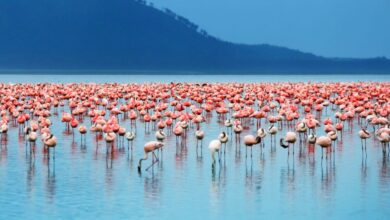
Lewa Wildlife Conservancy is a 62,000-acre wildlife preserve in Meru County Kenya, which is also a UNESCO World Heritage Site. It was formerly a cow ranch, but in the 1980s it started to help endangered black rhinos, and in 1995 it became a wildlife sanctuary. Lewa’s work began with rhino protection but has since evolved to include many other species conservation and community-centered conservation throughout northern Kenya and beyond. In order to encompass a much bigger area for wildlife, including rhinos to wander securely, Lewa teamed up with the neighboring Conservancy, Borana, in 2013.
Some of the rarest animals in the world can be found in Lewa Conservancy, including 214 black and white rhinoceros, the most of any safari park in the world. It serves as a refuge in a dangerous area when banditry and poaching were common. Lewa is home to reticulated giraffes and Grevy zebras, accounting for more than 90% of all zebras discovered outside of captivity. The conservancy is home to lions, cheetahs, wild dogs, leopards, and a variety of birds, making it one of the most ecologically varied parks in the nation. During the migratory seasons, Lewa also experiences an increase in animal activity, with approximately 400 elephants roaming the grounds each cycle. The show can be seen by guests from an especially constructed Elephant Underpass.
Aside from animals, Lewa prioritizes community activities and has led various efforts to help healthcare, water quality improvements, and education in the neighborhood. The conservancy boasts a high level of diversity and is home to the Big Five. One of the largest rhino populations in the world can be found there.

Activities At Lewa Wildlife Conservancy
Lewa has a range of activities, such as dawn hot air balloon rides, camel rides, and horseback riding. The majority of camps will also offer night drives, bush breakfasts, and sundowners in picturesque settings. In the Ngare Ngare forest, there are also trekking paths and waterfalls.
Additionally offered are cultural trips of nearby Maasai settlements. You will typically be welcomed with a welcoming ritual that involves a dance (participation is frequently invited). These are fascinating and give you a glimpse into how the tribes live. The villagers enjoy showing off their homes, despite the fact that it could seem voyeuristic, and the visitors give them much-needed money, so please remember to tip well and buy them some trinkets.




